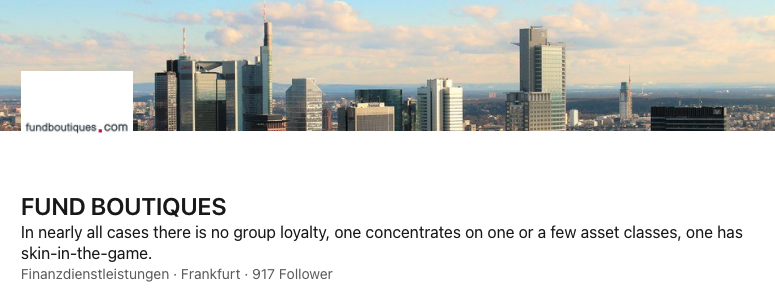Venture capital (VC) as an asset class has increasingly become the focus of interest for a wide range of investors in recent years. In 2018, more than CHF 1 billion was invested in VC for the first time in Switzerland alone, and as much as CHF 2.3 billion in 2019. VC has become attractive for investors, as such investments can be used to diversify portfolios, improve the risk/return profile and invest directly in innovations. However, to successfully implement VC investments, it is important to consider and understand some key points.
Innovation theory
According to Schumpeter’s theory of innovation, a distinction must be made between invention (generation of ideas, products, or processes), innovation (translation of these new ideas into marketable products or processes), diffusion (widespread adoption of the products and processes in the market) and creative destruction (industrial transformation through radical innovation). The particular attraction of investing in VC is that the introduction of revolutionary products and services is arguably the fundamental driver of sustainable and long-term economic growth, but at the same time can destroy the relevance and power of firmly established institutions and organizations in the short term.
Mastering the dynamics of innovation
This has been pointed out by James M. Utterback, professor of technological innovation and innovation at MIT, among others. He noted that existing organizations must consistently move away from past successes and embrace innovation – even if it undermines even their traditional strengths. In this regard, Utterback distinguished three phases of innovation – emergence, transition, and maturity. The degree of innovation falls continuously over the time axis concerning the product, while process innovation behaves inversely to this. The intersection usually represents the “dominant design”. An example of this would be Ford’s Model T at the beginning of the last century about automobiles. In the later maturity phase, on the other hand, standardization, integration, and, in particular, process optimization represent the central elements.
S-curves vs. Gauss
Accordingly, VC investors do not think in terms of the Gaussian bell distribution, but rather in terms of S-curves, which were coined by Everett M. Rogers, the father of diffusion theory. Using an S-curve, progressive innovations are depicted that are required to maintain the achieved market share in the face of newly burgeoning competition once the bell curve peaks and begins to fall again.

Ubiquitous disruption
Many researchers, authors, and consultants use the term disruption to describe any situation in which an industry is shaken and previously successful market players begin to stumble. Disruption does not explain innovation or success in the business sector, nor will it ever do so on its own. Accordingly, new products do not necessarily have to be disruptive to enable corresponding commercial success. In successful investments, many different forces are at play, each of which is decisive – often even those that may not appear decisive at first glance.
Attractive returns can be achieved with venture investments
Over the past 15 years, measured by the CA Global Venture Capital Index, VC investments have generated returns of 11.8% per annum. With investments in the two upper quartiles of the comparison group even 18% p.a. could be generated. In the same period, the S&P 500 Index could “only” gain 8.8% p.a… Furthermore, investment opportunities in the VC segment have improved significantly in recent years. New investment managers increasingly succeed in achieving top performance with remarkable consistency. The performance dispersion is still relatively high, but overall it has dropped significantly compared to the past. While venture investments in the period 1991-2001 during the tech bubble were characterized by a high loss ratio of 51.5% and an impairment ratio of 65.6%, these values have decreased to 20% and 40.9% respectively in the period 2002-2015. (Source: Cambridge Associates LLC)
Although, as described, important ratios have improved significantly, VC investors need patience and staying power due to the illiquidity of the underlying investments. Although a loss ratio of 20% is a significant improvement over earlier times, it is still a relatively high figure. In the global private equity sector, for example, the loss ratio is only 8.6%. Exciting returns are therefore also accompanied by higher risk in this case.
Overall, the risk/reward ratio for VC investments has improved considerably in recent years. As a result, such investments are also becoming interesting for new groups of investors who previously did not consider VC due to the risks involved. Since digitization has only just begun in many business areas and at the same time the venture sector, measured at around USD 340 billion, accounts for less than 0.5% of global equity market capitalization, there should continue to be plenty of interesting investment opportunities for talented investment managers despite larger inflows in this segment.
Structuring and settlement through funds
Due to the improved risk/return profile of VC investments, diversified products that invest in this asset class – namely Private Label Funds (PLFs) – are becoming increasingly popular among investors. In addition to diversifying and spreading risk across multiple investments and investors, PLFs have other key advantages for the parties involved in fund construction. These include the professional provision of services ranging from advice on structures to support in day-to-day operations by the AIFM. After the selection of investments by the fund manager, these services are elementary for the success of the investment in VC.
Apart from that, PLFs in cooperation with an experienced AIFM enable a cost-efficient fulfillment of regulatory requirements to make these investments accessible to investors. In addition, PLFs enable basic investor needs such as reporting, liability risks, efficient tax administration, and participation in existing knowledge, processes, and systems.
The services and expertise made available to VC investors through PLFs can thus represent significant added value. However, the inclusion and full consideration of the specific needs of this particular asset class is crucial for success. Among other things, independent business processes, good governance as well as a reliable, flexible, and expandable infrastructure that takes full account of the latest developments are indispensable success factors in the VC sector.
Conclusion
Innovation should be a part of investing in a diversified portfolio due to exciting return opportunities and improved risk metrics. Nonetheless, it is crucial to understand what innovation is, how it works, and what requires to be successful with investments in innovation. In addition, it is essential to ensure tailor-made structures for such investments, including lean configurations and addressing individual needs specific to such investments. For the success of a VC product, it is therefore of great advantage to work with a strong partner who has the necessary knowledge and experience in this segment.
Ralf Konrad is Chairman of the Executive Board, VP Fund Solutions (Liechtenstein), and a member of the LAFV Board of Directors.
“The Liechtenstein Investment Fund Association (LAFV) was founded in September 2000 and is the official representative body of the Liechtenstein fund industry. Its members are all UCITS management companies, most alternative investment fund managers (AIFM), and other service providers of the fund industry such as custodian banks, law firms, auditors, specialized IT service providers, or training and education institutions. LAFV is a board of directors consisting of the following persons: Alexander Boss (President), Bruno Schranz (Vice President), Ralf Konrad, Raimond Schuster, and Alois Wille. The LAFV makes it it’s business to promote the development of the Liechtenstein fund center and thereby further improve its attractiveness for fund providers and investors. It is achieved in particular through active development and needs-oriented expansion in fund legislation. Besides, the support of the members, as well as the representation of the interests of the fund industry and the location at home and abroad, belong to the tasks of the association.”
Liechtensteinischer Anlagefondsverband (LAFV): www.lafv.li
VP Fund Solutions: www.vpfundsolutions.vpbank.com

- ESG, Family Offices, Real Estate, Blockchain, AIFM – Liechtenstein, Switzerland & “Win-win Factor” (Interview – David Gamper, LAFV Liechtenstein Investment Fund Association)
- Family Offices, Asset Managers, Crypto Currencies & George Orwell (Interview – David Gamper, LAFV – Liechtensteinischer Anlagefondsverband)
- Liechtenstein, asset management, associations and the cultivated exchange of ideas (Interview – David Gamper, LAFV Liechtensteinischer Anlagefondsverband)
- „Germany is the most influential and attractive market for the Liechtenstein fund industry after Switzerland, which uses Liechtenstein as its gateway to the domestic market“ (Interview – David Gamper)

One thought on “FUND BOUTIQUES & PRIVATE LABEL FUNDS: Liechtenstein & Venture Capital Funds – Direct Investment in Innovation (Guest article – Ralf Konrad, LAFV Liechtenstein Investment Fund Association & VP Fund Solutions)”